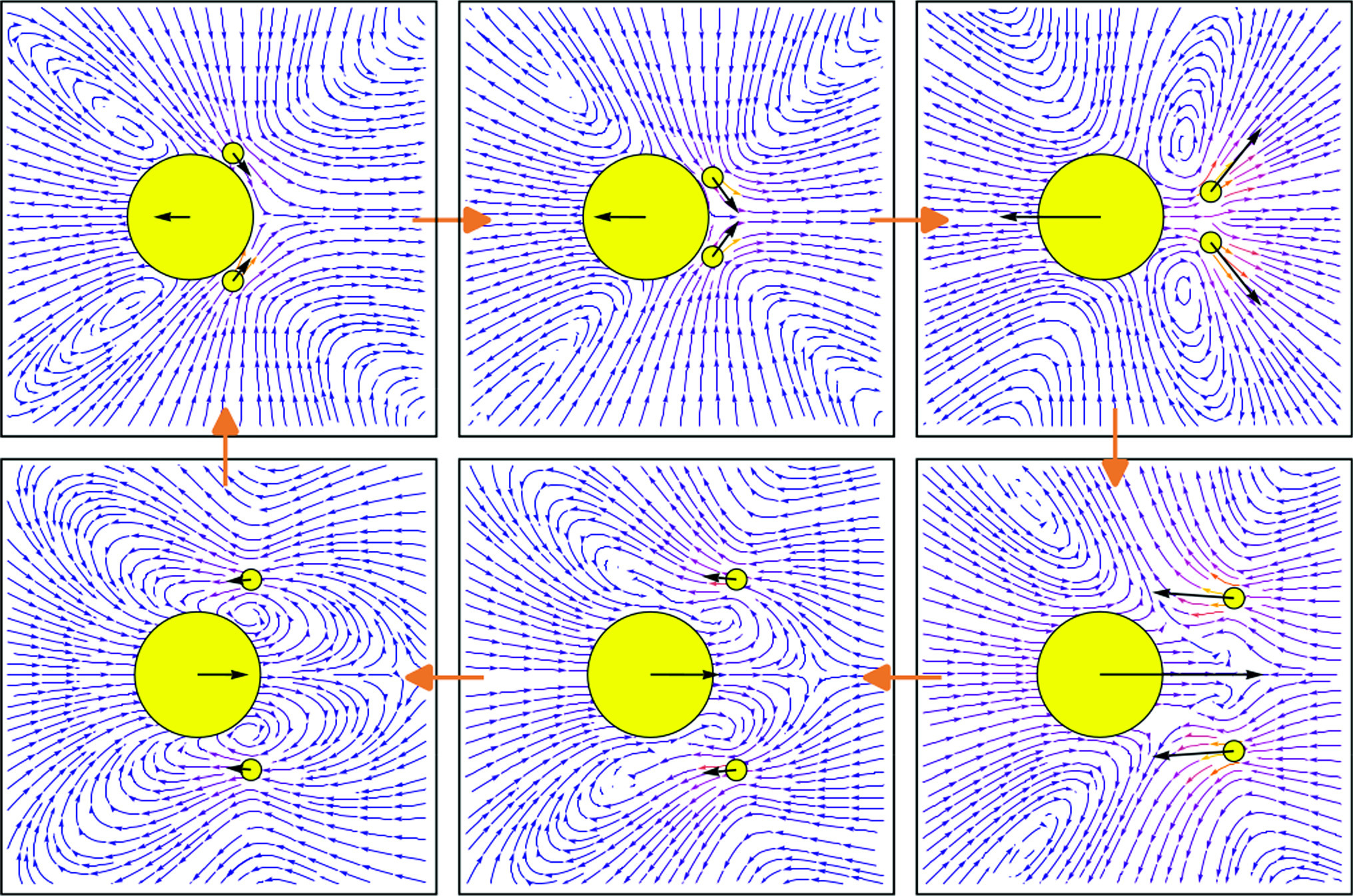https://doi.org/10.1140/epje/s10189-025-00513-3
Regular Article - Living Systems
Reinforcement learning of a biflagellate model microswimmer
Faculty of Physics, University of Vienna, Kolingasse 14-16, 1090, Vienna, Austria
Received:
11
March
2025
Accepted:
29
July
2025
Published online:
13
August
2025
Many microswimmers are able to swim through viscous fluids by employing periodic non-reciprocal deformations of their appendages. Here we use a simple microswimmer model inspired by swimming biflagellates which consists of a spherical cell body and two small spherical beads representing the motion of the two flagella. Using reinforcement learning, we identify for different microswimmer morphologies quasi-optimized swimming strokes. For all studied cases, the identified strokes result in symmetric and quasi-synchronized beating of the two flagella beads. Interestingly, the stroke-averaged flow fields are of pusher type, and the observed swimming gaits outperform previously used biflagellate microswimmer models relying on predefined circular flagella-bead motion.
© The Author(s) 2025
 Open Access This article is licensed under a Creative Commons Attribution 4.0 International License, which permits use, sharing, adaptation, distribution and reproduction in any medium or format, as long as you give appropriate credit to the original author(s) and the source, provide a link to the Creative Commons licence, and indicate if changes were made. The images or other third party material in this article are included in the article’s Creative Commons licence, unless indicated otherwise in a credit line to the material. If material is not included in the article’s Creative Commons licence and your intended use is not permitted by statutory regulation or exceeds the permitted use, you will need to obtain permission directly from the copyright holder. To view a copy of this licence, visit http://creativecommons.org/licenses/by/4.0/.
Open Access This article is licensed under a Creative Commons Attribution 4.0 International License, which permits use, sharing, adaptation, distribution and reproduction in any medium or format, as long as you give appropriate credit to the original author(s) and the source, provide a link to the Creative Commons licence, and indicate if changes were made. The images or other third party material in this article are included in the article’s Creative Commons licence, unless indicated otherwise in a credit line to the material. If material is not included in the article’s Creative Commons licence and your intended use is not permitted by statutory regulation or exceeds the permitted use, you will need to obtain permission directly from the copyright holder. To view a copy of this licence, visit http://creativecommons.org/licenses/by/4.0/.





